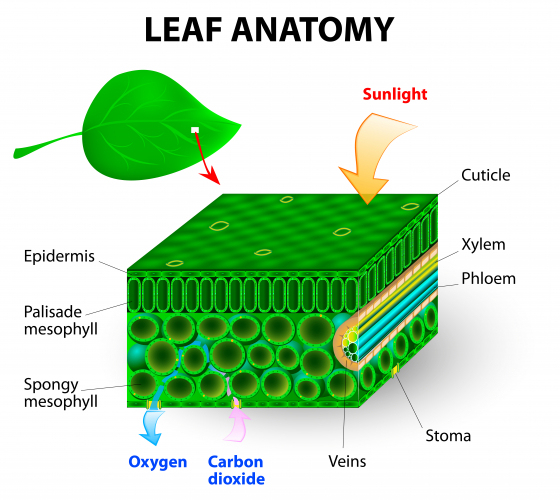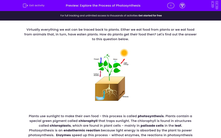Virtually everything we eat can be traced back to plants. Either we eat food from plants or we eat food from animals that, in turn, have eaten plants. How do plants get their food then? Let's find out the answer to this question below.
.jpg)
Plants use sunlight to make their own food - this process is called photosynthesis. Plants contain a special green pigment called chlorophyll that traps sunlight. The chlorophyll is found in structures called chloroplasts, which are found in plant cells - mainly in palisade cells in the leaf.
Photosynthesis is an endothermic reaction because light energy is absorbed by the plant to power photosynthesis. Enzymes speed up this process - without enzymes, the reactions in photosynthesis would happen really slowly. Water and carbon dioxide are also essential for photosynthesis. Water is absorbed by root hair cells in the plant's roots, and carbon dioxide enters the leaf of a plant through small pores called stomata (or stoma, when we're talking about just one). Stomata are normally surrounded by guard cells that open and close. They control which gases enter or exit the leaf.

Photosynthesis can be broken down into two main stages:
First Stage: Light energy is used to split water into oxygen and hydrogen. The oxygen is released into the atmosphere.
water → oxygen + hydrogen
Second Stage: The hydrogen is combined with carbon dioxide taken in from the atmosphere to make glucose.
hydrogen + carbon dioxide → glucose
The table below summarises the inputs (what is taken in) and outputs (what is released or produced) from each stage of photosynthesis:
|
Stage of Photosynthesis |
Input |
Output |
|
First Stage |
Light Chlorophyll (structure) Water (H2O) |
Oxygen (O2) Hydrogen (H2) |
|
Second Stage |
Hydrogen (H2) Carbon Dioxide (CO2)
|
Glucose (C6H12O6) |
The glucose made by photosynthesis is used for many processes:
It provides energy for respiration.
It is used to make cellulose - the main structural material in cell walls.
It is used to turn sugars, nitrates and other nutrients into amino acids which build up proteins.
It is stored as starch (in leaves, seeds, roots and tubers).
It is used to make fats and oils (energy stored in seeds).
In the following activity, you will explore the process of photosynthesis.







